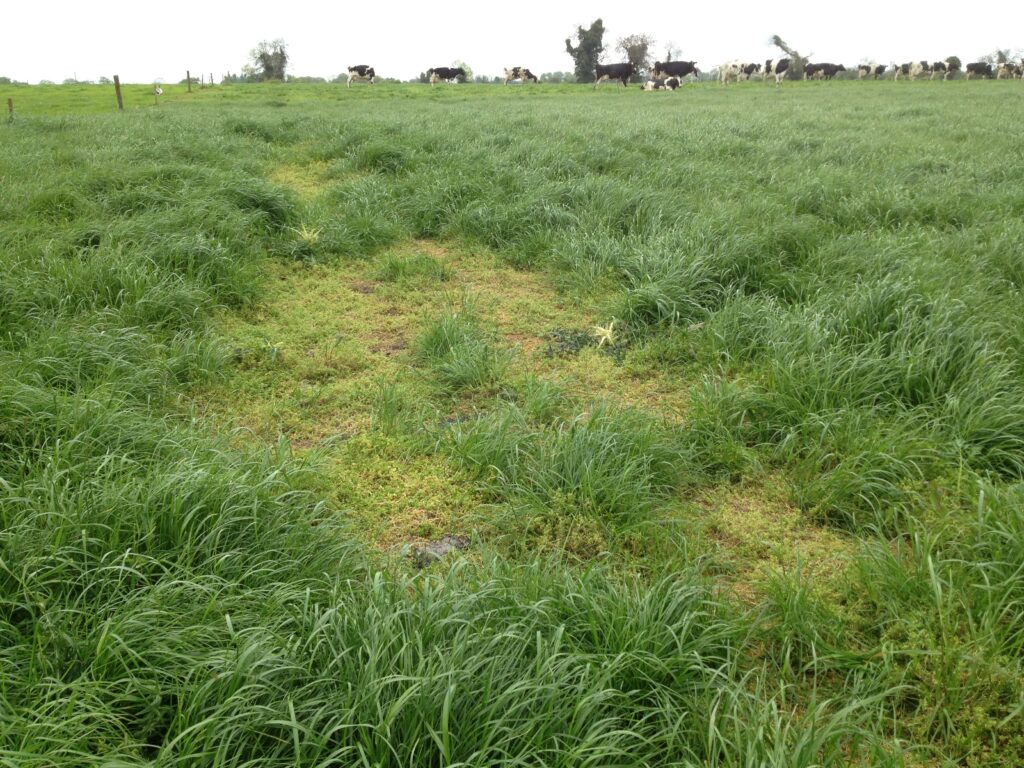Farmers should take every opportunity to spread lime on their land to address soil acidity issues, Teagasc’s Ger Courtney has said.
Speaking to Agriland, the Teagasc Dairy Advisor said applying lime can have a positive impact on grass growth, particularly in the shoulders of the year.
Addressing a low soil pH, he said, with the use of ground limestone can release up to 50kg of free Nitrogen on an annual basis and it is an area that needs to be addressed as 60% of Irish soils are deficient in lime.
However, he said lime usage is down slightly on farms this year on the back of lower milk prices farmers have been receiving over the past 12 months.
1. Identifying soils that lack lime
One of the first and probably the most important steps that needs to be taken before spreading lime is identifying the lime requirement of your soil.
This can be done through the use of a soil test.
Courtney said that a quick soil test will provide farmers with the recommended levels they need to spread to raise the pH level of their farm.
“The soil test can be tailored to your soil type,” he said.
2. Targets
Research shows that the ideal pH for the growth of perennial ryegrass is a pH of 6.3-6.5. If the soil pH is below this level it will have a negative impact on quantity of grass grown on the farm.
“Farmers invest a lot in reseeding and fertiliser, but if the pH is not correct they are not going to get the most out of these investments,” he said.
On marl soils, he advised farmers to target a pH of 6.3 and they should only spread lime when ground conditions allow.
Below that level you are going to hit grass production.
3. Cheapest way to address a lack of lime
According to Courtney, the cheapest way to address a low pH is through the use of ground limestone and this can be applied at anytime of the year when ground conditions allow.
“To maintain soil pH farmers need to spread lime as at least 2t of lime is lost through drainage in a five year cycle.
“Ground limestone is the cheapest method of adjusting soil pH, while the varying degree of release also helps to keep the pH of the soil in check over a five-year period.”
The Teagasc advisor said that 30% of the lime applied will act in the first year after spreading, while the remaining 70% will become active over the next five years.
4. Caution when spreading lime on heavy soils
Farmers who are operating on heavier type soils have been urged to be cautious when spreading lime, as excessive lime applications can lead to trafficability difficulties.
On heavier soils, he said, farmers should spread no more than 2t of lime per acre each year and wait two years to apply the balance of the lime requirement.
5. Issues with Copper top-up
Spreading lime on soils that are high in Molybdenum has been shown to tie up copper and make it unavailable to cattle and sheep.
To counteract this problem, Courtney said farmers should aim to spread lime on a quarter of their farm on an annual basis and to avoid blanket spreading the whole farm.
“Farmers in high Molybdenum areas tend to aim for a target pH of 6.0-6.2.“.




